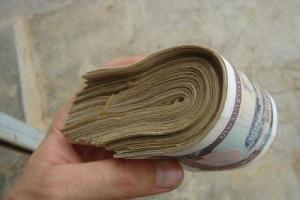IN individual heating circulation is carried out due to physical properties warm water rising up. The more the boiler heats, the faster the coolant goes through the cycle and heats the room. But in private houses or apartments with a large area, this leads to excessive consumption of the energy source (gas, electricity, solid fuel). A technically competent solution is to install a pump in the heating system. To do this, it is important to select a suitable circulation pump, determine best place sidebar, correctly install and start the device.
Types of circulation pumps
Inserting a device for forced heating allows ensure rapid heating of the entire room, no matter how far the radiators are from the boiler. The operation of such equipment provides significant savings in the consumption of gas or other source of heating liquid. The pumps themselves, according to their internal configuration, are divided into two types: “wet” and “dry” types.
Pumps « wet» type are designed so that during operation the rotor and impeller are in contact with water. The liquid serves simultaneously lubrication and cooling for rotating elements. Such equipment is suitable for a private house, apartment or country cottage. It is designed for heating mains of short length, i.e. private use. Efficiency - 50%. The service life is 20 years. It is better to purchase a device with a brass or stainless steel body.
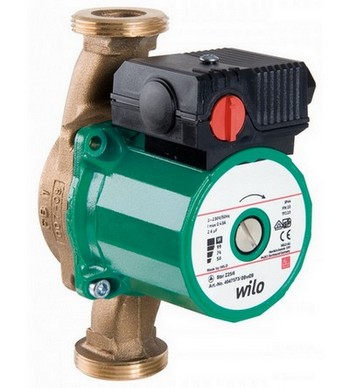
Pumps « dry"like they have two internal chambers separated by seals. Contact of the rotor and liquid is excluded. Lubrication is performed separately. Seals are replaced every three years. The pumps have an increased efficiency of 80%. Such circulation devices are mounted in industrial systems heating and shopping centers. Due to their louder operation, they are installed in separate rooms - boiler rooms.
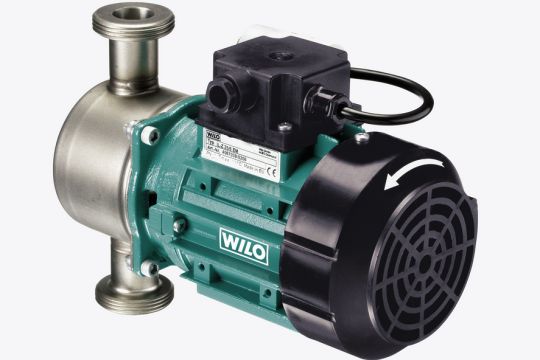
Don't install too much powerful unit- this gives extra noise. It would be optimal to install equipment that, in terms of thermal conductivity parameters, has a 15% deficit from the required system throughput. These characteristics will allow you to fully use the pump without overload.
Instead of one “dry” pump, several “wet” pumps can be installed in parallel. This increases your work potential.
Convenient in huge houses, where in addition to heating there is a warm floor.
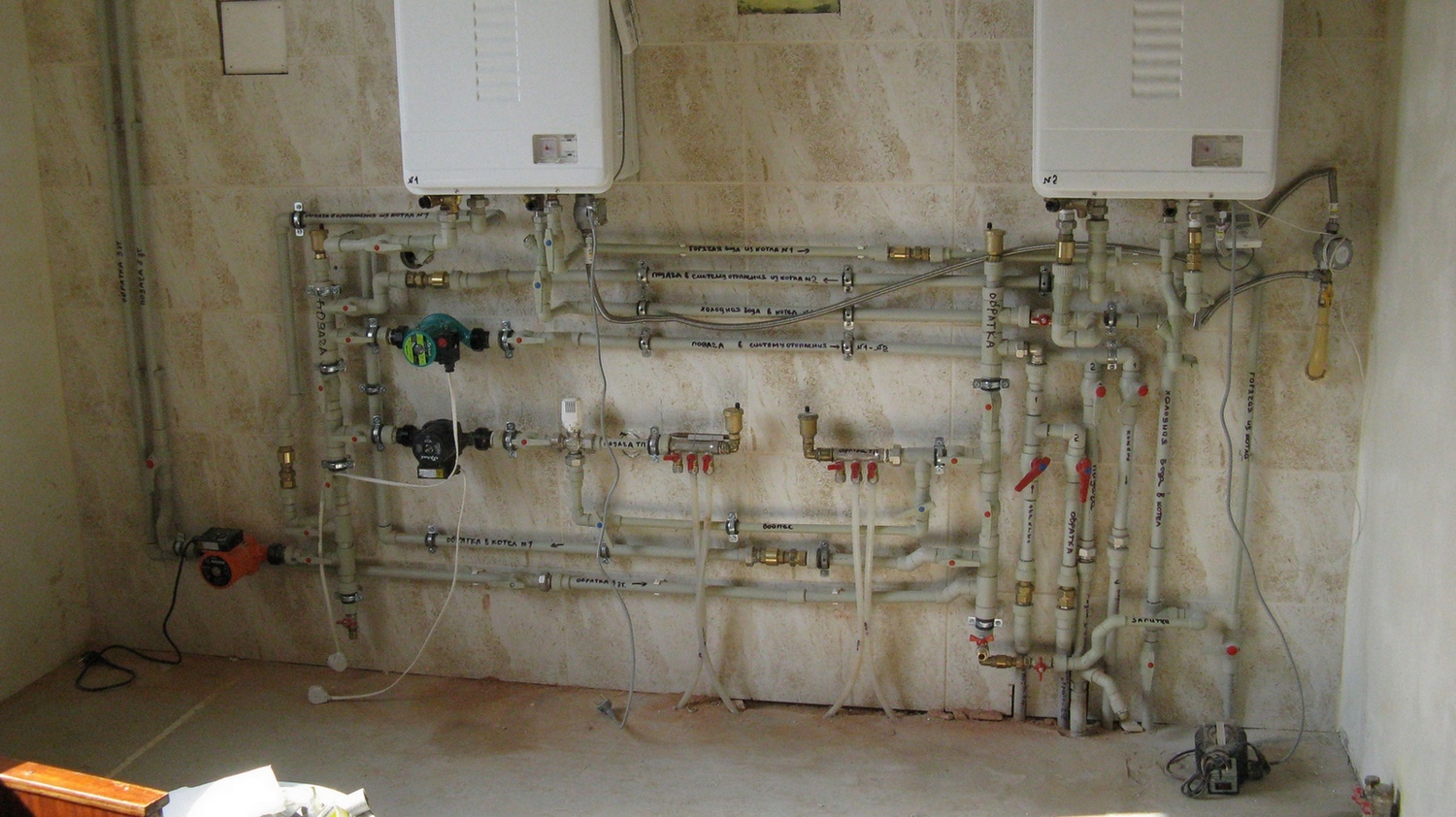
Installation diagram
A forced circulation heating system must operate efficiently. It may be technically impossible to install a pump next to the boiler due to lack of space. Fortunately, modern pumps are designed in such a way that they can be inserted into the heating circuit anywhere. The impeller, rotating, ensures the movement of coolant in the system.
But it is worth noting that bearings and plastic parts“wet” type units are constantly in contact with water. Therefore, the most optimal heating scheme with a circulation pump would be inserting the device into the return water supply pipeline to the boiler. The temperature of the carrier in this section of the circuit is less hot. Consequently, the pump parts will be subject to less overheating. If it is not technically possible to install it in front of the boiler, then installation can be done on the supply side. Working temperature parts are designed for 110°C.
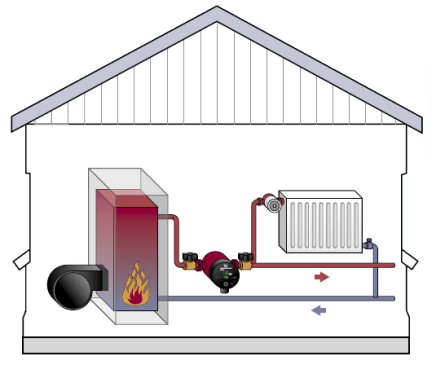
The important role of bypass
The circuit of the circulation device must include bypass. This is explained by the energy dependence of the pump on electric current, in the event of a sudden shutdown, the heating should continue to operate naturally by circulation. The bypass shuts off the flow of coolant through the pump and directs the water through a straight channel. The bypass is made of two pipe bends that branch the flow from the main channel and three ball valves that regulate the movement of water. One valve closes the direct pipeline, the other two valves cut off or open the path to the pump. The capacity of the cranes must be equal to the capacity of the system.
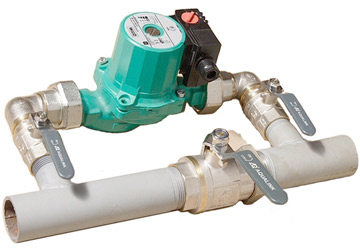
A similar scheme is also practical for repairs. circulation pump. If something needs to be replaced or checked in it, the system will be able to work naturally without it. Also, in the off-season, you can save energy on pump operation by running the heating for a short time without it. On large manifolds, the bypass may consist of two pumps operating alternately or together.
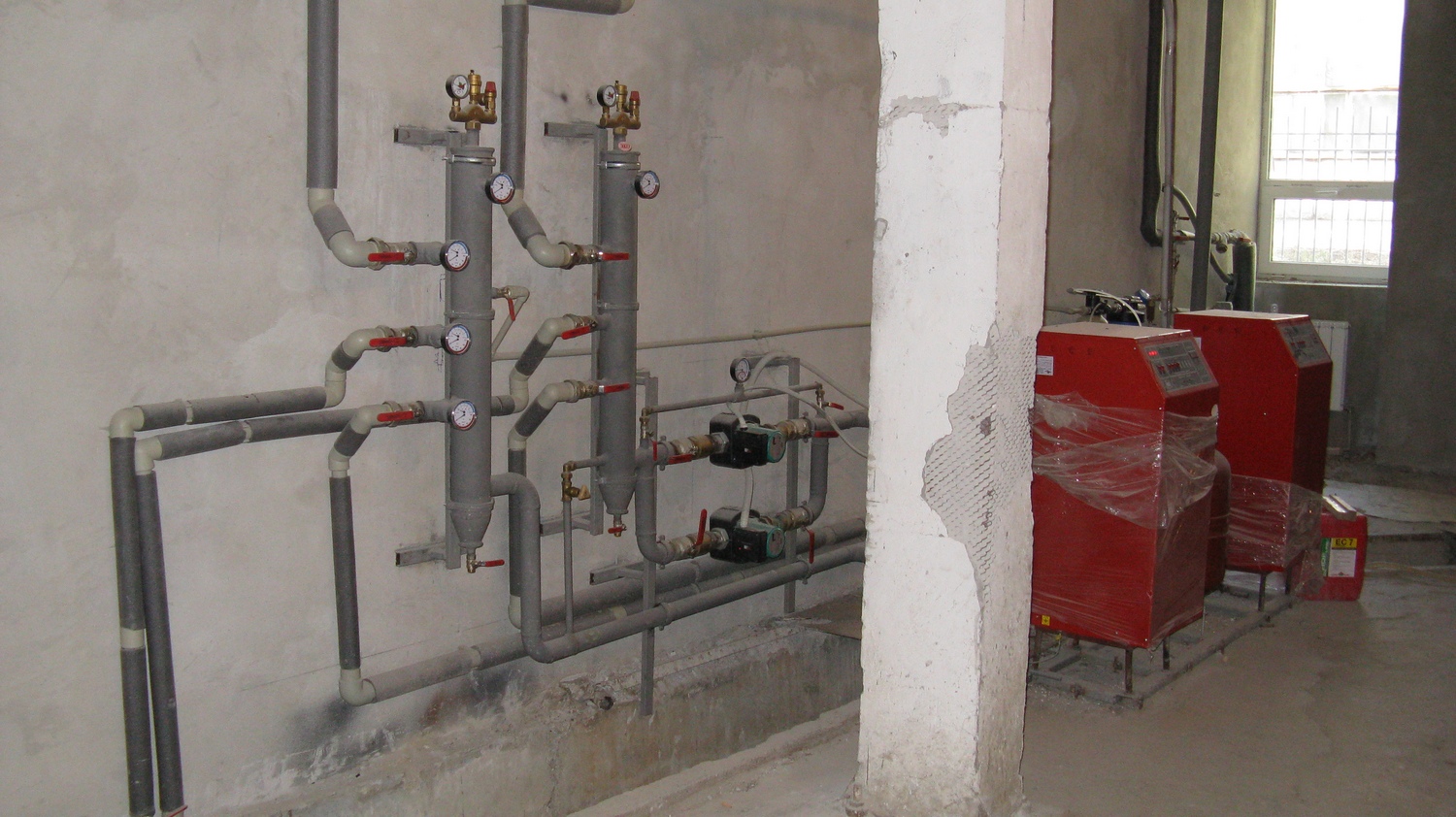
Preparatory work
How to install a heating pump? When integrating a pump into the existing heating system of a private house necessary:
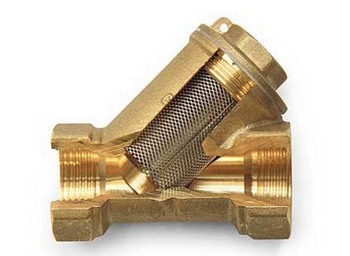
Product installation
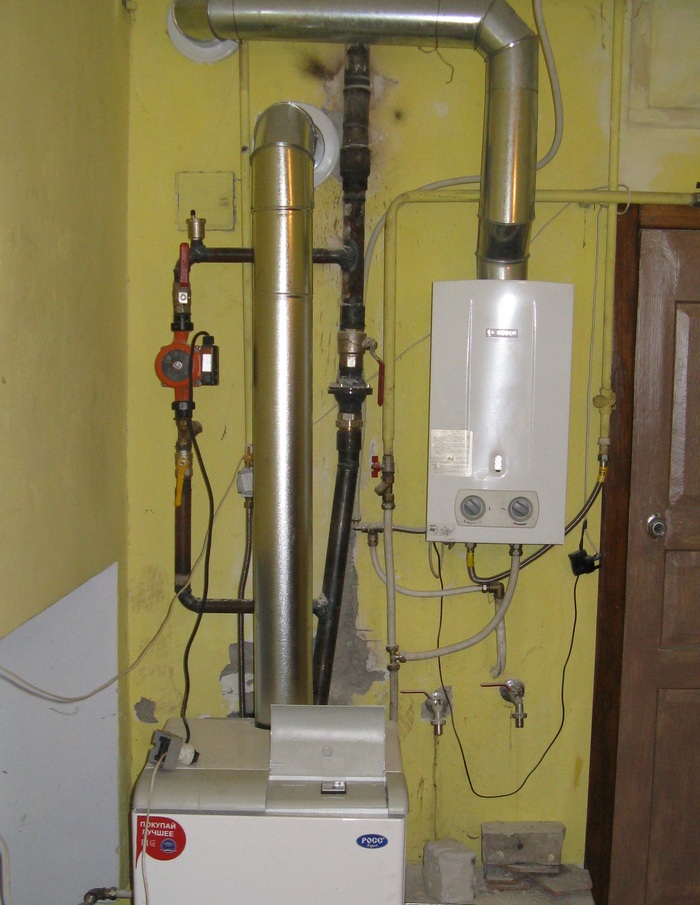
Pump installation for forced circulation coolant gives good results saving energy source and more effective work heating. You can install the device yourself if you have these instructions and necessary tools. If something seems difficult, then it is better to invite specialists.
Video on the topic
Circulation pumps are becoming more and more common modules in home heating systems. They ensure proper circulation of the coolant, which contributes to uniform heating of the entire household. Life time modern models reaches 10-15 years. Let's see how to choose and install the right water pump for heating a house and why it is needed in general.
The need for circulation pumps
Before we tell you how to properly install a circulation pump for heating your home, let's talk a little about why it is needed in a heating system. Thin plastic pipes appeared on sale quite recently. Their predecessors are thicker metal pipes large diameter. Possessing a solid margin of safety and increased throughput, they ensured the unhindered flow of coolant through the heating system.
Previously, water pumps were not needed, since thick pipes did not create serious hydrostatic resistance. The design of old heating devices should also be noted - their impressive internal volumes did not create any special obstacles to the flow of coolant. Only the circuits had to be mounted according to a special scheme:
- A high pipe was installed from the boiler, raising the coolant above all heating devices;
- An expansion tank was mounted at the highest point;
- The supply pipe was mounted at an angle so that the coolant flows freely towards the radiators;
- The return pipe had to be installed at an angle towards the heating boiler.
This scheme, which did not include water pumps, ensured excellent heating performance.
Problems were created only if it was necessary to heat big house. In this case, the coolant flows through the system with difficulty, since the large circuit creates high resistance. The longer the pipes and the more heating devices, the more obstacles there are. In two-story mansions, the resistance reaches the highest values. As a result, we observe:
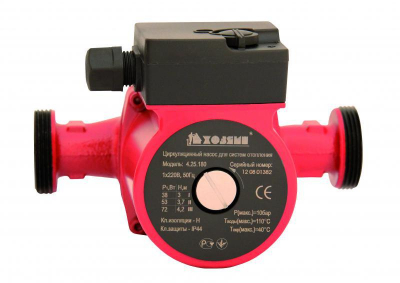
The voiced problems can be solved in two ways - by more carefully designing the heating system circuit or by using a water pump.
- Uneven heating of the heating system;
- Cold branches;
- Boiler water overheating.
Features of modern heating systems
A water heating pump is a small device with an electric motor and an impeller that ensures normal coolant circulation in the system. IN modern heating do without it - a large number of bends, a small clearance of plastic and metal-plastic pipes, as well as a small capacity of heating devices.
This number of obstacles causes an increase in hydrostatic resistance in the heating system. Abundance also affects additional elements– these are thermostatic valves, manifolds, hydraulic arrows and much more. Many problems are created by the desire to hide all the pipes in the walls so that only the radiators are visible from the outside - in this case, you cannot do without a water pump for heating the house.
Adding fuel to the fire is the complete absence of slopes in modern heating - all pipes are located in a horizontal plane, without deviations in height.
Water pumps are in demand in heating systems closed type.Here the coolant flows in a closed circuit without contacting the atmosphere. To install the systems, thin plastic pipes are used, so it is simply impossible to ensure normal flow of coolant here - it is necessary to install a water pump for heating.
The pump can also be installed in the heating system open type, immediately after the heating boiler, but always before expansion tank, and not after it.
Two pumps in the heating system or more
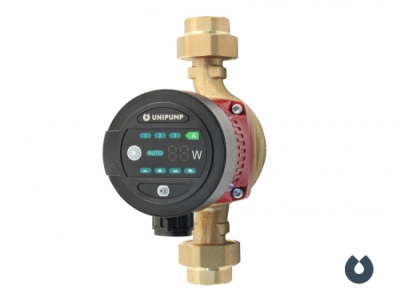
In order to ensure economical heating operation, we recommend purchasing more advanced energy-saving models of water pumps.
The water pump for circulating water in the heating of a private house is often not the only one in the system. Fashion recent years are water heated floors. They provide heating floor coverings, creating a comfortable atmosphere for people to stay. Since the basis for their manufacture is thin pipes made of cross-linked polyethylene, independent circulation of the coolant in them is impossible. Therefore, an additional pump is installed in the system.
Underfloor heating systems require the installation of a water pump. It is placed in junction box, next to the thermostatic valves, after which it must be connected to the mains. It works only in the underfloor heating circuit, while the second pump circulates the coolant through the rest of the heating circuit.
There are also diagrams of heating systems with several heating circuits. When planning to create independent heating for floors and rooms, consumers think about how many pumps are needed to heat a private home. One electric pump is installed here as a common one, in the supply or return, then a separate pump is installed for each circuit.
How to choose a water pump for heating your home
A heating pump for a private home is selected according to several basic parameters:
- Productivity and pressure;
- Rotor type;
- Power consumption;
- Control type;
- Coolant temperature.
Let's look at how to choose water pumps for heating a private home.
Performance and pressure

Correctly made calculations will help you choose the unit that best suits your needs, which means it will help you save your family budget.
The performance of an electric water pump refers to its ability to move a certain amount of water per minute. The following formula is used for calculation – G=W/(∆t*C). Here C is the thermal capacity of the coolant, expressed in Wh/(kg*°C), ∆t is the temperature difference in the return and supply pipes, W is the required heating power for your home.
The recommended temperature difference when using radiators is 20 degrees. Since water is usually used as a coolant, its heat capacity is 1.16 W*h/(kg*°C). Thermal power is calculated for each household individually and expressed in kilowatts. Plug these values into the formula and get the results.
The pressure is calculated in accordance with the pressure loss in the system and is expressed in meters. Losses are calculated as follows - losses in pipes are considered (150 Pa/m), as well as in other elements (boiler, water purification filters, radiators). All this is added up and multiplied by a factor of 1.3 (provides a small margin of 30% for losses in fittings, bends, etc.). There is 9807 Pa in one meter, therefore, we divide the value obtained by summation by 9807 and obtain the required pressure.
Rotor type
Home heating uses wet rotor water pumps. They are characterized by a simple design, minimal noise level and no need for Maintenance. They are also characterized by small dimensions. Lubrication and cooling in them is carried out using a coolant.
As for dry-type water pumps, they are not used in home heating. They are bulky and different high level noise, require cooling and periodic lubrication. They also require periodic replacement of seals. But they have a large throughput - for this reason they are used in heating systems multi-storey buildings and large industrial, administrative and utility buildings.
Power consumption
The most modern water pumps with energy consumption class “A” have the lowest power consumption. Their disadvantage is their high cost, but it is better to invest once to get reasonable energy savings. In addition, expensive electric pumps have lower noise levels and a longer service life.
Control type
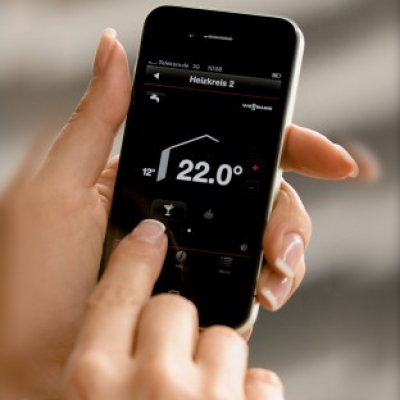
Through a special application you can get information about the operation of the device wherever you are.
Typically, the rotation speed, productivity and pressure are adjusted using a three-position switch. More advanced pumps are equipped with electronic control systems. They control the parameters of heating systems and allow you to save energy. The most advanced models are controlled wirelessly, directly from a smartphone.
Coolant temperature
Water pumps for heating a private home differ in their operating temperature range. Some models can withstand heating up to +130-140 degrees, these are the ones that should be preferred - they can cope with any thermal loads.
As practice shows, operation at the maximum temperature is possible only for a very short time, so having a solid reserve will be a plus.
Other characteristics
When choosing a water pump for heating, you need to pay attention to the maximum operating pressure for the selected model, installation length (130 or 180 mm), type of connection (flange or coupling), and the presence of an automatic air vent. Also pay attention to the brand - under no circumstances buy cheap models from little-known developers. The water pump is not a part you should skimp on.
Connecting the circulation pump to the heating system
Installing a circulation pump in the heating system of a private house begins with choosing its location. You need to decide where to make the tie-in - in the supply or in the return. The last option is the most common. In open-type systems, it can also be installed on the supply pipe, but only immediately after the boiler, before the expansion tank.
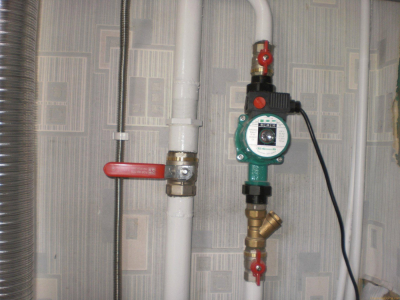
Also, the installation rules state that there should be no vacuum in the boiler heat exchanger - it is created by water pumps. Therefore, the optimal placement location is the return pipe, not the supply pipe.
Placing water heating pumps for a home in the return pipe has a very important advantage - the temperature of the coolant in this area is lower, which ensures good cooling of the electric pump. In the supply pipe it will operate at a temperature close to the maximum value, and this is already minutes.
In case of warm floors the pump is mounted in a distribution cabinet. When using several circuits, water pumps are mounted as far as possible from the boiler, behind the hydraulic arrow - one pump for each direction. Placement on the supply pipe is also possible if the circuit does not branch, but it is too long - in this case the electric pump is placed away from the heating boiler.
Correct installation additional pump provides for its power supply and switching on separately from other pumps in the system.
Position of the water pump in space
We have already decided where to install the circulation pump for heating and have developed brief instructions– if the circuit does not branch, put it on the return line. In the case of several circuits, the connection diagram will be different - we install a pump on the supply pipes in each direction.
Regardless of where the water pump will be installed for home heating, the axis of its rotor must be located strictly in a horizontal position. Along other axes its position can be arbitrary. But him electrical diagram should not be located at the bottom, for which there is a completely logical explanation - if the unit fails, the electrical circuit will be flooded with coolant, which will cause a short circuit.
Carrying out installation work
The water pump is installed in the heating system through a bypass. Take a look at its drawing and familiarize yourself with the main elements:
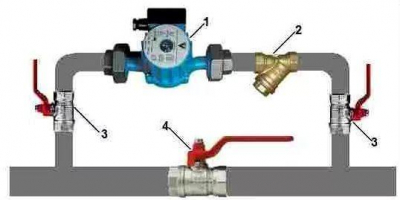
The connection diagram with a bypass is good because it allows you to switch from natural circulation to forced circulation at any time. It will also help you replace the water pump without stopping and draining the entire heating system.
- The circulation pump (1) is the main “person” in the system;
- Shut-off valves (3) – disconnect the pump from the heating;
- Bypass valve (4) – ensures that the coolant moves only through the pump or along both channels;
- Dirt filter (2) – provides coarse filtration from large mechanical contaminants.
Let's see how to connect a pump to a heating boiler and what is needed for this. First, we inspect the installation site to find free space to place the bypass. At the next stage, we assemble the bypass elements, prepare the taps, nuts, drains and dirt filter. We will also need a set of keys to connect individual units, and seals.
Let's start assembling the bypass - we form a section with a water pump, screwing a dirt filter and taps to it. Next, we proceed to inspect the section of the pipe where the insertion will take place. We cut out a piece for the bypass tap, take the area with the pump, and cut holes for it. Next, we weld all the elements and only then tighten all the threaded connections with wrenches - this cannot be done before welding.
You can also install a check valve on the heating pump - it will help prevent the coolant from moving in the wrong direction.
Having connected the water pump to a floor-standing or wall-mounted boiler, we proceed to electrical work– connect electrical wires with power to the terminals. Here it is recommended to install a separate RCD, choosing a 1 or 2 kW sample.
The next step is to start the water pump. To do this, you need to fill it with water, removing air from it. The air plug is removed through a built-in bleeder or through a plug screw. We open all the taps, open the drain or unscrew the screw plug, wait until the air comes out and water flows. After this, we seal the system and try to start the water pump. If the device is noisy, it means that not all of the air plug has come out - partially unscrew the plug screw and keep the system open until the air bubbles disappear.
Next, all that remains is to adjust the shaft rotation speed so that the productivity is slightly less than normal. There is nothing wrong with installing a water pump in a heating system with your own hands - you just need to know how to work with tools. If problems arise, consult with specialists.
Video
To improve the performance of the heating system, a circulation pump is installed. With its help, the coolant circulates evenly throughout the system and distributes heat equally throughout all rooms. We will discuss how to connect a circulation pump to the heating system below.
Functional features of circulating sediments for heating systems
Owners autonomous system heating systems quite often face the problem of uneven heat distribution in different rooms. The rooms that are located near the boiler are different high temperature air, and those in the distance - low.
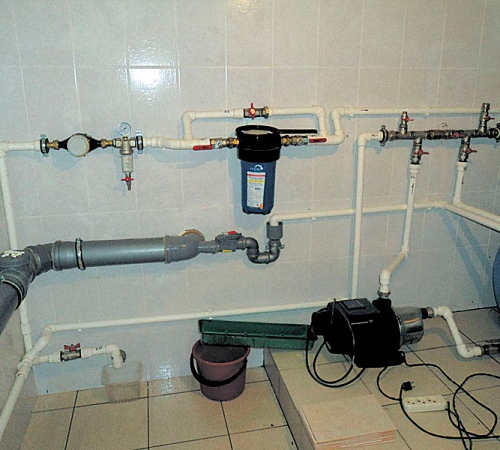
To solve this problem, you should use the following options:
- expand the pipes and redesign the entire system;
- use a circulation pump that will help distribute the coolant in the heating system.
The least amount of physical and material effort must be allocated to perform the second method. Connecting a circulation pump to the heating system allows you to achieve:
- uniform heat distribution in the system;
- eliminate air accumulations and efficiently transport coolant;
- improve the performance of the heating system.
The heating system, which is based on the transportation of coolant, requires work to install circulation equipment. This device allows for forced transportation of coolant in a heating system with a closed loop.
In relation to design features, circulation pumps are usually divided into two groups:
- wet rotor equipment;
- dry-motor equipment.
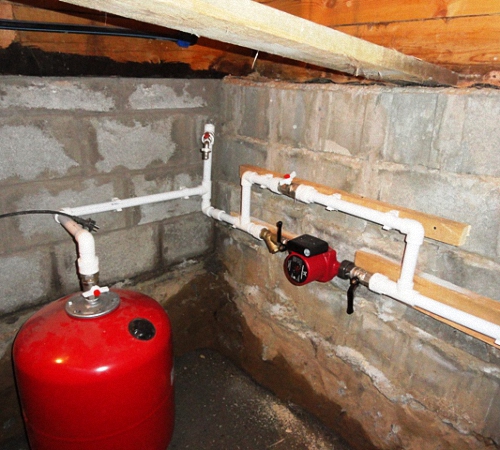
The first option is distinguished by the presence of a rotor and impeller, which rotates in the coolant fluid. Between the elements in the form of a rotor and stator there is a glass, for the manufacture of which it is most often used stainless steel. In addition, the rotor is distinguished by the presence of a shaft - metal or ceramic in origin.
The liquid that moves through the system is responsible for lubricating parts and cooling the engine. This pump has a fifty percent efficiency.
More advanced models of such pumps have modular principle. The blocks are grouped in relation to the size of the pump and the required fluid supply. Thus, in order to repair this equipment, it is enough just to replace certain parts.
In addition, this type of pump is distinguished by the presence of an impeller, which has both radial and axial features. One of the main advantages of such sediments is the independent removal of excess air that is present in the system.
To pump large volumes of liquid in public or industrial settings, the use of circulating pumps is recommended.
The operating principle of such equipment is that the coolant does not come into any contact with the surface of the rotor during its operation. In addition, in the area between the electric motor structure and the main part of the sediment, there is an end-type seal. A thin film of water forms between the pump sections; it is capable of sealing the equipment as the rotor rotates.
An agglomerated type of coal is used to make rings. If they have to work under high operating loads, ceramics or stainless steel are used as a base.
In relation to the design features, two types of sediment are distinguished. The first of them operates in a dry environment and has a flange type connection, while the second is distinguished by the presence of a connection coupling type. If there are two pipes on one fragment of the pump, it is called direct-flow; they are installed directly in the pipe.
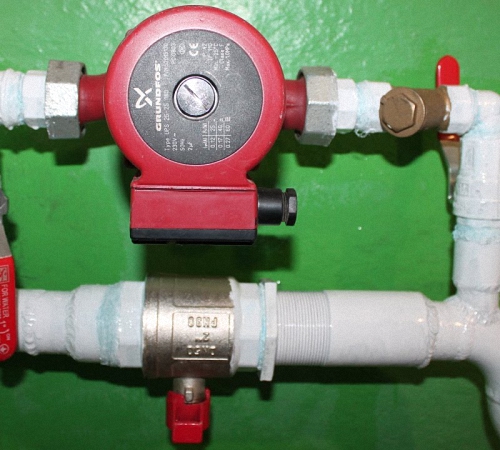
Circulation pump for heating systems - characteristics and selection features
The procedure for selecting a circulation pump is an important process that requires a high degree of responsibility from its performer. The sediment used in the heating system must be made from quality materials, since it must easily withstand coolant temperatures that reach more than one hundred degrees.
In addition, you should pay attention to the following characteristics of the device:
- the value of the working pressure is determined in meters;
- the amount of working flow.
When choosing a sediment, you should compare its power with the room and heating system in which it will be installed. To do this, first determine the heat required to heat the entire house.
To calculate this indicator, the area of heated premises should be multiplied by 100 W of heat if the calculations are carried out in a residential building and by 70 W if in an apartment. With an improved thermal insulation system, this figure is reduced to 50.
To carry out complete transportation of the coolant fluid in the system, the pressure that will perform these actions must be correctly calculated. For these purposes, it is necessary to determine the system point located away from the starting point of the system, that is, the area of the most distant radiator.
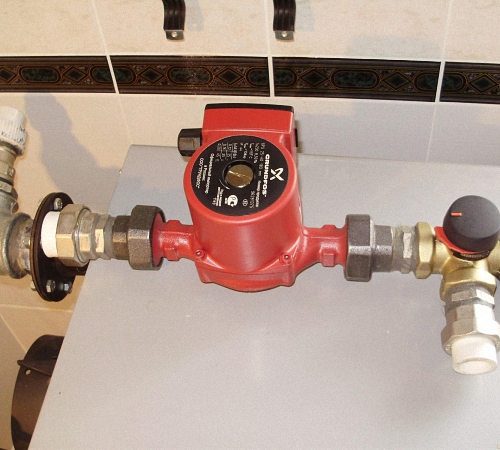
To calculate the circulation pump for a heating system, we recommend using the following formula:
K=(A+BxC)/bxs(m), where:
- K is the total length between points;
- A - hydraulic resistance;
- B - working fluid and its density;
- C is the resistance value of sewer sections;
- b - density value;
- s is the acceleration value.
Each of these values is found in the technical parameters of the circulation pump.
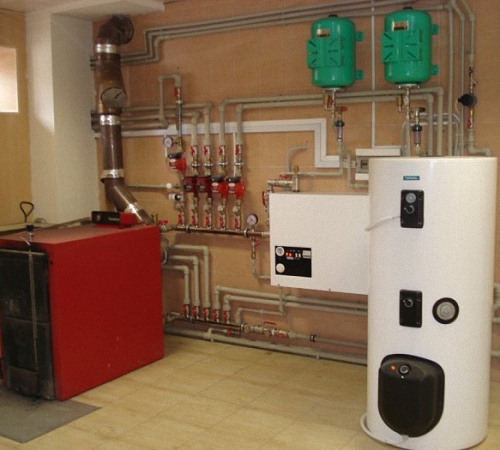
In addition, the manufacturer of the circulation pump is an important factor. We invite you to familiarize yourself with the most popular manufacturers of this equipment, whose product reviews are extremely positive.
1. Circulation pump for Grundfos heating systems - among the advantages of using these pumps, we note:
- optimal balance between low power and high performance;
- economical consumption of electricity to ensure the operation of the equipment;
- ability to maintain the required temperature during autonomous operation of the pump;
- the presence of special thermostats that simplify working with the system;
- simplicity of design does not require special experience for installation and maintenance of this equipment;
- The variety of models in terms of design and technological capabilities allows you to select equipment that will suit your needs. individual characteristics any heating system;
- the cost of such pumps directly depends on their configuration characteristics;
- high practicality and reliability, which is confirmed by positive reviews from most buyers.
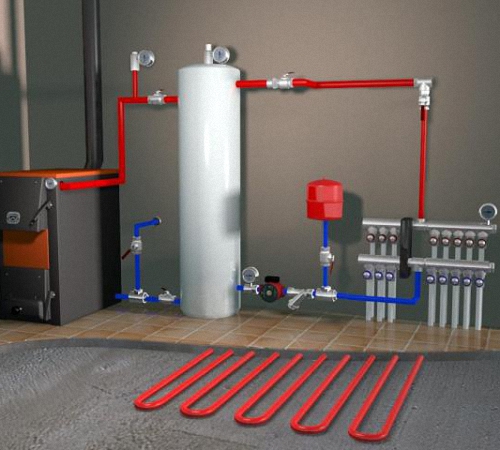
2. The circulation pump for Wilo heating systems is of German origin, the pumping equipment of this manufacturer is of high quality and also has positive specifications. Among the advantages of this equipment we note:
- installing a Wilo circulation pump can significantly increase the efficiency of the heating system and improve heat exchange;
- thus, heating boilers require less fuel, which means that the cost of ensuring the heating is operational is significantly reduced;
- thanks to the presence high pressure, plaque does not accumulate on the pipes and various kinds salt.
Installation diagram of a circulation pump in a heating system
Installation work to connect the circulation pump to the heating system should be carried out in accordance with these requirements:
1. Elements in the form of ball valves are installed on both sides of the approximate installation location of the pumping equipment itself, which will help stop the flow of water if it is necessary to repair or replace the pump.
2. The filter valve will help produce mechanical cleaning water. Thus, the pump and system will work longer.
3. A manual valve will help solve the problem of vapor accumulation.
4. You should also pay attention to the markings of the installed equipment.
5. Submersible pump should only be installed horizontally.
6. Make sure the terminals are facing the correct direction.
7. To avoid the occurrence of various types of leaks, you should use a high-quality sealant.
8. Connect the equipment only to a grounded electrical network, this will protect people using the pump and the equipment itself from current surges in the network.
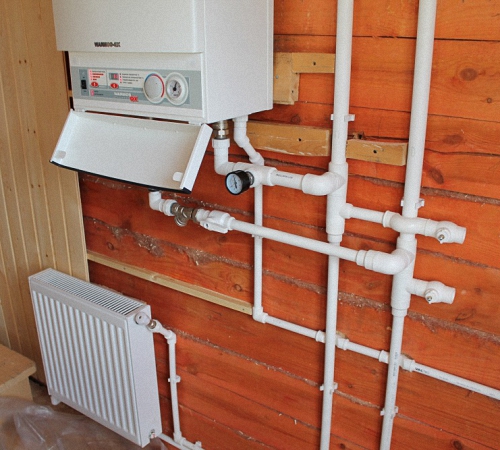
How to install a circulation pump in a heating system
Taking the process of connecting the circulation pump seriously will help you avoid most of the problems that arise during its operation, the most common of which are:
- rapid equipment breakdown;
- non-compliance with pump installation technology;
- incorrect terminal placement;
- lack of grounding;
- mandatory deflation;
- failure to perform work to clean the system;
Installing a circulation pump in open system heating is carried out extremely rarely, since the efficiency of its operation is not always justified.
To carry out work on installing a circulation pump in the heating system, you will need the following:
- American women;
- bybass line;
- check valve;
- filter valve;
- various types of plumbing tools.
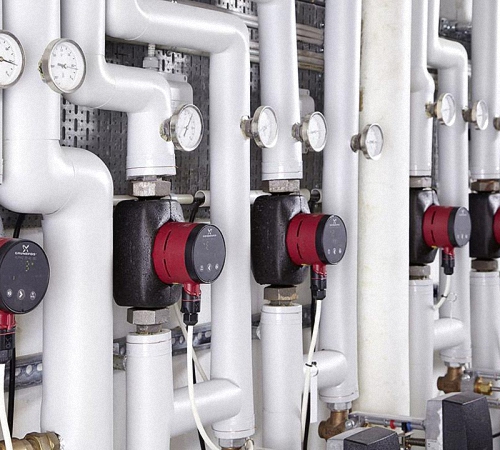
After purchasing a pump, the installation procedure follows. Before performing it, you should definitely read the instructions, which indicate the main individual points for installing this equipment.
The circulation pump is installed in the heating system on the return flow of the coolant near the heating boiler. Thus, it is possible to reduce the temperature of the coolant that passes through the equipment, and its service life is significantly increased.
Before installing the pump, the boiler should be disconnected from the system and locking mechanisms should be installed to block the movement of the coolant. Next, the pump is installed with threaded connections.
Please note that the horizontal location of the circulation pump will significantly reduce its noise output. Since it vertical installation promotes secretion large quantity noise during operation.
In addition, you should install a filter that will help clean the water from dirty impurities; if you neglect this rule, the pump will quickly fail. During installation of the circulation pump in closed system heating, a check valve must be installed to prevent the outflow of water from the system; in an open type heating system, the installation of a check valve is optional.
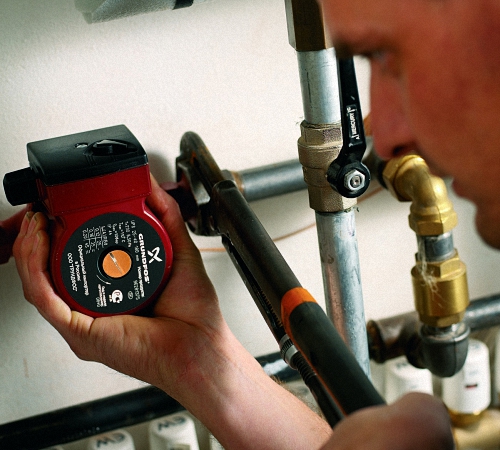
Features of connecting the circulation pump to the heating system
To connect the pump to the system, follow these steps:
1. When installing equipment into a previously operating heating system, it is recommended to completely get rid of the coolant by draining it from the system.
2. If the heating system has been in use for a long period of time, it is recommended to clean it by filling it with liquid and flushing the system.
3. Next, the functional chain is mounted and shut-off valves. Taps are installed on both sides of the pump ball type. With their help, pumping equipment can be dismantled without draining the coolant.
4. In the area located in front of the pump, a filter should be installed to limit the entry of mechanical impurities into the pump.
5. The presence of an air valve will allow, if necessary, to rid the system of air accumulation.
6. To avoid damage to the working part of the pump, it should be installed only in a horizontal position. In this case, the direction of the terminals should be top.
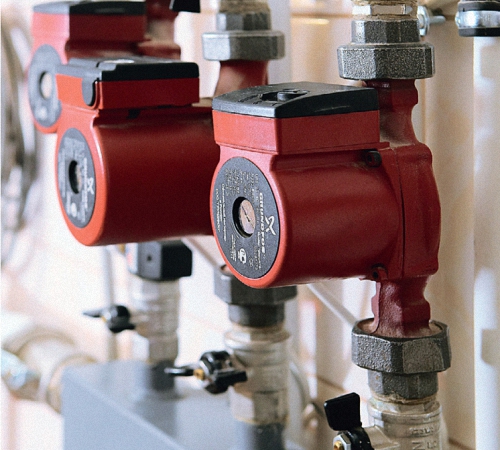
7. For protection threaded connections from moisture, it is recommended to treat them with a sealant.
8. After completing all the work, run the coolant into the system. Next, by opening the central screw, the system gets rid of excess air.






